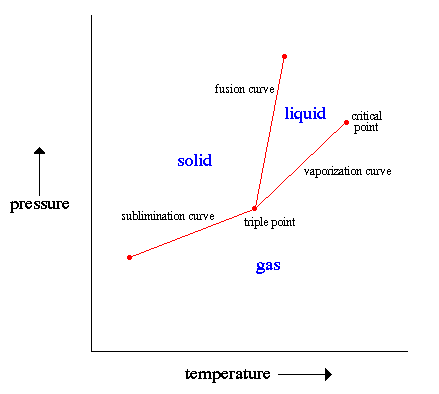
A phase diagram is a graph showing the limiting conditions for solid, liquid, and gaseous phases of a single substance or of a mixture of substances while undergoing changes in pressure and temperature or in some other combination of variables, such as solubility and temperature. The figure shown below displays a typical phase diagram for a one-component system (i.e., one consisting of a single pure substance), the curves having been obtained from measurements made at various pressures and temperatures.

At any point in the areas separated by the curves, the pressure and temperature allow only one phase (solid, liquid, or gas) to exist, and changes in temperature and pressure, up to the points on the curves, will not alter this phase. At any point on the curves, the temperature and pressure allow two phases to exist in equilibrium: solid and liquid, solid and vapor, or liquid and vapor.
For example, the line drawn for the variation with temperature of vapor pressure for the liquid is the boundary between liquid and vapor; only vapor can exist on the low-pressure, high-temperature side of the line, while the substance must be liquid on the high-pressure, low-temperature side; liquid and vapor exist together at temperatures and pressures corresponding to points on the line; at the place where this line vanishes, called the critical point, the liquid and its vapor become indistinguishable. Along the line between liquid and solid, the melting temperatures for different pressures can be found. The junction of the three curves, called the triple point, represents the unique conditions under which all three phases exist in equilibrium together.
Phase diagrams are specific for each substance and mixture. Complex mixtures may require three-dimensional phase diagrams, which can be represented in two dimensions through use of perspective. Phase diagrams are widely used in studies of mineral equilibriums in connection with the conditions of formation of rocks and minerals within the Earth. They also are invaluable when designing industrial equipment and seeking optimum conditions for manufacturing processes, and in determining the purity of substances.
Excerpt from the Encyclopedia Britannica without permission.